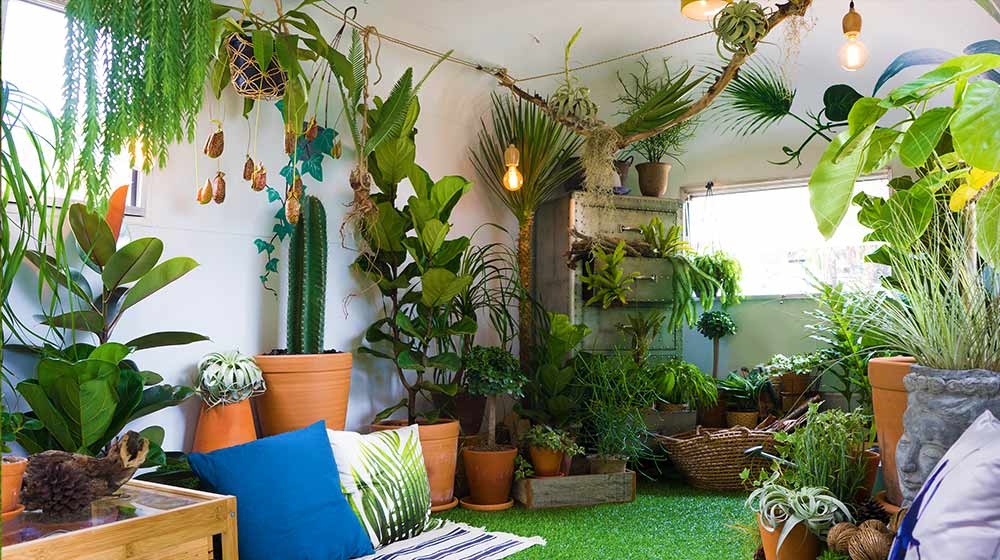Are you looking to start gardening in your small apartment balcony? No matter how smaller space you have, you can still make your dream of gardening true at your apartment. After all, apartment gardening is all about working with the space available.
It is a simple concept: you grow plants in containers or pots rather than in the ground near the window or on a balcony.
All you need to go through these ideas to create an apartment garden with our handyman services from our experts in NYC.
If you live in an apartment, you can still create a tranquil patio garden.
In this guide, you’ll learn apartment gardening tips for the smallest of spaces.
Consider the Size of Your Balcony:
The average size of smaller balconies is around 4 feet deep by 10 feet wide.
That means you have to get quite creative to plant a small garden on your balcony.
You can grow vegetables, plants, or flowers, but an herb garden would work exceptionally well. It’s a great use of balcony space, adding colors and fragrances.
Consider the size of your balcony to decide how many herbs you want to plant.
Use Pots:
Growing in pots and containers offers several advantages. Since the plants are not buried in a single location, you can experiment with them and move them around until each one finds its ideal microclimate. A sudden freeze does not necessarily mean certain death for delicate species.
Because the plants are close to you, you will see them frequently and can take steps to undo the damage, pluck out spent flowers and wilted leaves.
However, a container garden can also present challenges. You should water on a schedule, as the soil in containers can dry out more quickly, especially terra cotta pots that “breathe” more easily than plastic. Mulch helps keep out moisture and weeds.
Earthworms and pollinators may not be able to get into your garden, so you may need to do your job and till the soil, fertilize it, and even pollinate it by hand.
Similarly, you should give each container its own tray so that the water does not drain. This will also prevent water flow from damaging the platform they are resting on.
Pick the Right Plants:
Not all plants are suitable for apartment gardening, but many are. Choose from potatoes, chard, lettuce, bell peppers, cherry and bush tomatoes, eggplants, summer squash, and more. (Ask your local landscaping staff for the best option.)
Many herbs will also thrive in containers and make a new addition to your windowsill or frame. Seasoning with herbs is a great way to add depth to your food and reduce salt.
These five vegetables can grow in small containers:
Tomatoes
Tomatoes are extremely productive plants. The size of the pot depends on the size of the plant you are growing. Remember, tomatoes need a lot of sun, so you need a balcony or wide window ledge.
Look for “specific” varieties that reach a certain height and then stop growing. For similar reasons, bite-size cherry tomato varieties may be better suited for a garden with limited space.
Lettuce
Growing lettuce requires a wide pot, rather than a deep one. It grows quickly and you can pluck leaves and eat from the same plant multiple times during the growing season.
Leafy greens and romaine lettuce leaves need less space than icebergs and other lettuces. Unlike tomatoes, lettuce needs some shade, cool temperatures, and limited exposure to the midday sun.
Peppers
Not only do bell peppers grow well in containers, but their bright colors look amazing. They need a warm, sunny spot to thrive and a deep pot, at least 8 to 10 inches.
It is best to keep one plant in each pot. Under the right conditions, each will produce a lot of bell peppers.
Radishes
Radishes grow quickly and do well in containers, but they are best in small, wide pots. For most varieties, 6-inch deep pots are fine. You should leave 7 centimetres of space between each plant.
Carrots
It is easy to grow carrots in pots, but they are needed to plant deeper. 12 to 16 inches works best, however, you can find much shorter seed varieties.
This vegetable is a cold-weather plant that requires regular watering and moist soil, so the carrot does not dry out or crack.
Indoor plant maintenance
Indoor plants brighten your home and provide fresh air, however indoor growing conditions are not always the best. So we recommend that you grow plants that last without constant maintenance. Snake and spider plants work well.
All plants need water, light, and nutrition, but some more than others. Durable plants also include aloe, jade, and lamb’s ear. Use adequate soil, water the right amount of water, and provide adequate sunlight and your plants will flourish even indoors.
Growing up, rather than going out, is another way to garden. The vertical gardens are quite modern. You can place them in an outdoor space or inside your home.
Try Vertical Gardening:
Flowers, vines, and herbs work well for these types of projects.
You can even grow vegetables vertically. Beans, peas, and cucumbers are great options for small vertical gardens. Squash, whose sprawling size makes it an unlikely option for a small garden, can be trained to be tall in a vertical frame.
Just because you don’t have your own garden doesn’t mean you can’t enjoy the beauty of nature or the satisfaction of growing your own food. Gardening in small spaces can improve your mood and end anxiety.







0 Comments.